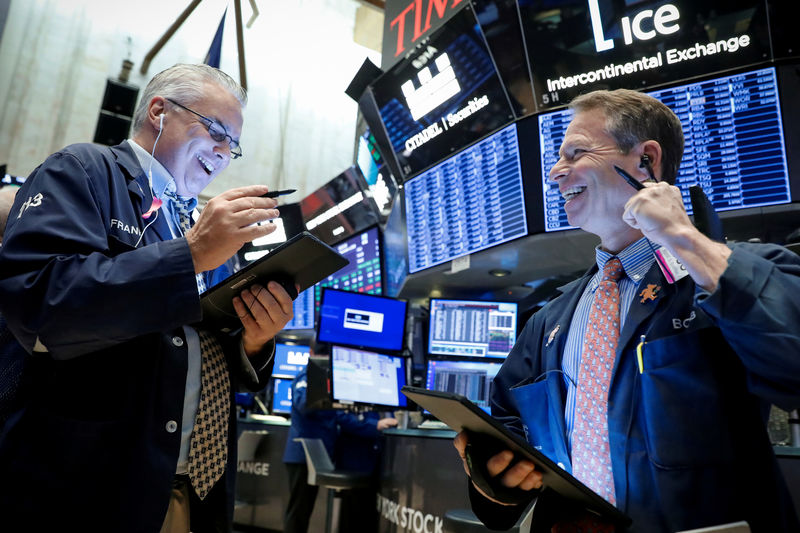By Chuck Mikolajczak
NEW YORK (Reuters) - The benchmark S&P 500 edged lower on Tuesday, as investors paused in the wake of a rally buoyed by hopes of a trade deal between the United States and China that sent the three main U.S. stock indexes to record highs in the previous session.
While there was growing optimism over a deal, investors have also shown caution, pushing up value stocks over growth names over the past few sessions. The Russell 1000 value (RLV) index has climbed nearly 2% over the past three sessions compared to a gain of 0.8% for the Russell 1000 growth (RLG) index.
Keeping some tentativeness intact, China is pushing President Donald Trump to remove more tariffs as part of the "phase one" deal, which may be signed this month, according to latest reports.
"The market is at an all time high, people are getting a little skittish about the deal," said Tim Ghriskey, chief investment strategist at Inverness Counsel in New York.
"Definitely a move to value, but it is more of a move to financials because rates are moving higher and a move to energy because the commodity is moving higher and those are two sectors that have gotten absolutely mauled by the market, the valuations are cheap there."
Financials (SPSY), a big weight for value stocks, rose 0.42% as benchmark U.S. Treasury yields hit a six-week high and energy (SPNY), gained 0.45% as oil climbed more than 1% as the best performing S&P sectors. The rate-sensitive real estate sector <.SPLRCR> dropped 1.76%.
The Dow Jones Industrial Average (DJI) rose 30.52 points, or 0.11%, to 27,492.63, the S&P 500 (SPX) lost 3.65 points, or 0.12%, to 3,074.62 and the Nasdaq Composite (IXIC) added 1.48 points, or 0.02%, to 8,434.68.
The S&P 500 and the Nasdaq closed at record highs for a second session on Monday, while the Dow hit a record high for the first time since July.
Apart from hopes of a resolution to the trade war, stocks have received a boost from a largely better-than-expected third-quarter earnings season, the Federal Reserve's interest rate cut and upbeat economic data.
Data on Tuesday showed the reading on the ISM services index improved to 54.7 in October from 52.6 in September, above expectations of 53.4, according to economists polled by Reuters, easing concerns that a slowdown in the manufacturing sector was spreading to other parts of the economy.
Over three quarters of S&P 500 companies that have reported results so far have beaten profit expectations, Refinitiv data showed. Earnings for the quarter are now expected to dip 0.8%, an improvement from the 2.2% decline expected on Oct. 1.
A 2.05% rise in Boeing Co's (N:BA) shares provided the biggest boost to the blue-chip Dow Jones index after Chairman Dave Calhoun said the company's board believed CEO Dennis Muilenburg "has done everything right" following two fatal crashes of its 737 MAX jet.
Helping the Nasdaq advance was Adobe Inc (O:ADBE), which gained 4.25% as the Photoshop software maker raised its fourth-quarter digital media annualized recurring revenue target and gave a strong forecast for fiscal 2020.
Uber Technologies Inc (N:UBER) fell 9.85% as the ride-hailing service posted a bigger third-quarter loss from a year earlier.
Declining issues outnumbered advancing ones on the NYSE by a 1.13-to-1 ratio; on Nasdaq, a 1.10-to-1 ratio favored advancers.
The S&P 500 posted 58 new 52-week highs and no new lows; the Nasdaq Composite recorded 148 new highs and 40 new lows.

Volume on U.S. exchanges was 7.89 billion shares, compared to the 6.61 billion average for the full session over the last 20 trading days.